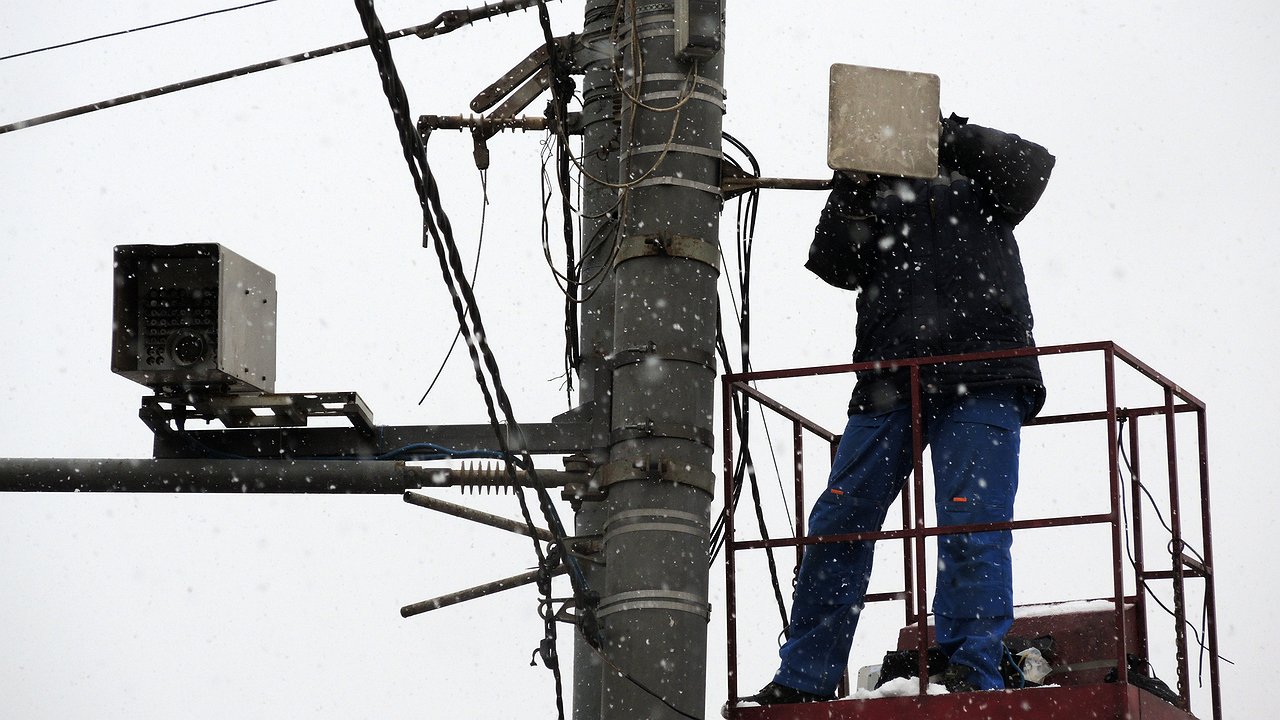We are all introduced to the concept of “average speed” by teachers at school. And the knowledge of motorists on this topic was once actively refreshed by traffic police officers with fines. The AvtoVzglyad portal found out how police speed cameras now actually record speed.
Perhaps all motorists know: the traffic police officially stopped issuing fines for exceeding the average speed on a section of road a few years ago. Meanwhile, from a technical point of view, most modern fines for speed limit violations are based on measuring the average speed of the vehicle on the site!
We explain why this is the case below. And to begin with, we will have to recall the essence of the decision of the Supreme Court of the Russian Federation, which it adopted at the end of 2019. The motorist, penalized for exceeding the speed limit on a section of the highway, then reached BC. Thereafter, the highest court recognized that the decision on an administrative offense (speeding offense in this case) must include the exact time and place of its occurrence. And that the road section as such is not suitable.
Since then, no “average speed” fines have been issued in Russia, much to the dismay of the traffic police, private owners of traffic cameras and regional officials. But the lion’s share of the 183.5 million “automatic” fines issued in the country in 2022 will be specifically related to speeding. And they all don’t seem to exceed the average speed. But it’s still how to watch! Especially if you know how a modern traffic police camera works.
The old complexes of the Strelka type of the first generation, which use the radar signal to calculate speed, do this according to the so-called Doppler effect. It lies in the fact that when the source of the reflected radio signal approaches the radar, the frequency of the received radio wave increases slightly. We detect this increase and calculate the speed of the car. The measurement takes place almost instantaneously due to the propagation of radio waves at the speed of light. During this process, the car does not have time to move from its place to a considerable distance.
Modern traffic police systems, which are increasingly replacing old road radars, calculate the speed of the car differently – by analyzing the video image. As the car moves past the area within the camera’s field of view, the software algorithm roughly calculates how many seconds it takes for the car’s image to move from one frame edge to the next. In reality, in the field of view of the camera, the car passes 50-70 meters. And it is far from the fact that at a constant speed – by no means always and not all drivers use cruise control!
That is, the program of a modern automatic fixation complex actually calculates the average speed of a vehicle on a section (!) of the road. For example, most traffic police cameras in Russia generate “congratulations” materials for exceeding the speed limit based on the average speed, not the instantaneous speed of the car. Unlike the old radar systems. Formally, this is in direct contradiction with the ruling of the Supreme Court. But who cares about such “little things” …
Perhaps all motorists know: the traffic police officially stopped issuing fines for exceeding the average speed on a section of road a few years ago. Meanwhile, from a technical point of view, most modern fines for speed limit violations are based on measuring the average speed of the vehicle on the site!
We explain why this is the case below. And to begin with, we will have to recall the essence of the decision of the Supreme Court of the Russian Federation, which it adopted at the end of 2019. The motorist, penalized for exceeding the speed limit on a section of the highway, then reached BC. Thereafter, the highest court recognized that the decision on an administrative offense (speeding offense in this case) must include the exact time and place of its occurrence. And that the road section as such is not suitable.
Since then, no “average speed” fines have been issued in Russia, much to the dismay of the traffic police, private owners of traffic cameras and regional officials. But the lion’s share of the 183.5 million “automatic” fines issued in the country in 2022 will be specifically related to speeding. And they all don’t seem to exceed the average speed. But it’s still how to watch! Especially if you know how a modern traffic police camera works.
The old complexes of the Strelka type of the first generation, which use the radar signal to calculate speed, do this according to the so-called Doppler effect. It lies in the fact that when the source of the reflected radio signal approaches the radar, the frequency of the received radio wave increases slightly. We detect this increase and calculate the speed of the car. The measurement takes place almost instantaneously due to the propagation of radio waves at the speed of light. During this process, the car does not have time to move from its place to a considerable distance.
Modern traffic police systems, which are increasingly replacing old road radars, calculate the speed of the car differently – by analyzing the video image. As the car moves past the area within the camera’s field of view, the software algorithm roughly calculates how many seconds it takes for the car’s image to move from one frame edge to the next. In reality, in the field of view of the camera, the car passes 50-70 meters. And it is far from the fact that at a constant speed – by no means always and not all drivers use cruise control!
That is, the program of a modern automatic fixation complex actually calculates the average speed of a vehicle on a section (!) of the road. For example, most traffic police cameras in Russia generate “congratulations” materials for exceeding the speed limit based on the average speed, and not the instantaneous speed of the car. Unlike the old radar systems. Formally, this is in direct contradiction with the ruling of the Supreme Court. But who cares about such “little things” …
Source: Avto Vzglyad
Donald Salinas is an experienced automobile journalist and writer for Div Bracket. He brings his readers the latest news and developments from the world of automobiles, offering a unique and knowledgeable perspective on the latest trends and innovations in the automotive industry.














